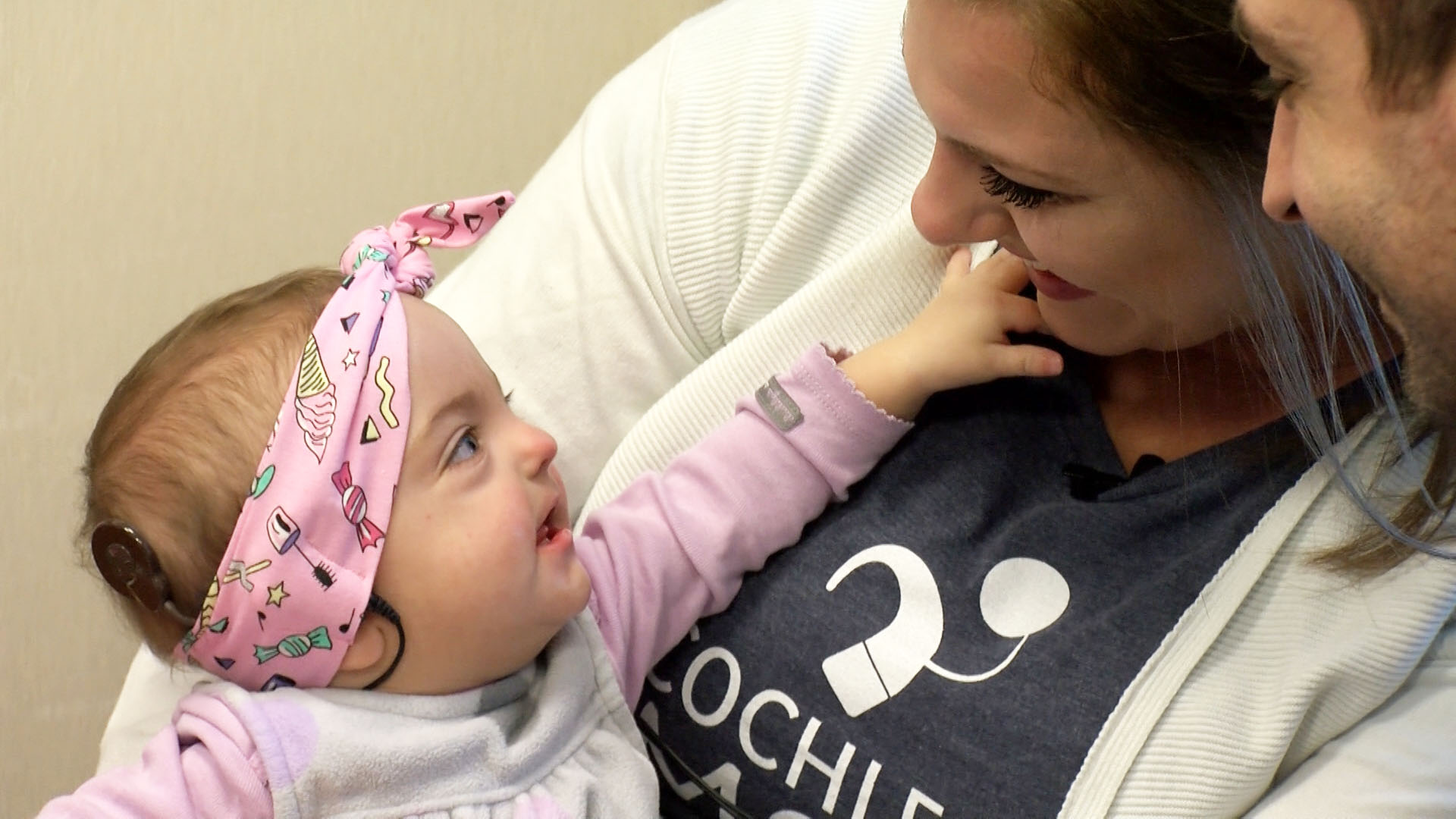 One month after 7-month-old Aida Little was born, her parents realized she couldn't hear. Experts at Mayo Clinic diagnosed Aida with a condition called Waardenburg syndrome, a rare genetic disorder that causes deafness and pigment changes of the hair, eyes and skin.
One month after 7-month-old Aida Little was born, her parents realized she couldn't hear. Experts at Mayo Clinic diagnosed Aida with a condition called Waardenburg syndrome, a rare genetic disorder that causes deafness and pigment changes of the hair, eyes and skin.
In October, a surgical team at Mayo placed cochlear implants into Aida's head with the hopes that the devices would wake up her ears. Today, Aida hears her parent's voices for the first time.
Watch: Baby Aida reacts to hearing her parents' voices for the first time.
Journalists: Nat sound b-roll of Aida reacting to hearing her parents is in the downloads at the end of the post. Please ‘Courtesy: Mayo Clinic News Network.’
A full story including interviews with Aida's family and care team will be posted in December.
About Waardenburg syndrome
Waardenburg syndrome is a rare genetic condition. Patients who have it may experience hearing loss; deafness; very pale blue eyes; eyes that don't match in color; and skin pigment changes, such as a patch of white hair. The National Institutes of Health says Waardenburg syndrome affects approximately 1 in 40,000 people, and there are four recognized types of the disease.
About cochlear implants
A cochlear implant is an electronic device that partially restores hearing. It can be an option for people who have severe hearing loss from inner ear damage and who receive limited benefit from hearing aids.
Unlike hearing aids — which amplify sound — a cochlear implant bypasses damaged portions of the ear to deliver sound signals to the auditory (hearing) nerve.
Cochlear implants use a sound processor that fits behind the ear. The processor captures sound signals and transmits them to a receiver implanted under the skin behind the ear. The receiver sends the signals to electrodes implanted in the snail-shaped inner ear or cochlea.
The signals stimulate the auditory nerve, which then directs them to the brain. The brain interprets those signals as sounds, though these sounds won't be like normal hearing.
It takes time and training to learn to interpret the signals received from a cochlear implant. Within a year of use, most people with cochlear implants make considerable gains in understanding speech.
Cochlear implants can improve communication and quality of life for people with severe hearing loss who receive little benefit from hearing aids. Increasingly, cochlear implants in both ears (bilateral) are accepted as standard care for the treatment of severe hearing loss — particularly for infants and children who are learning to speak and process language.
People who lost hearing after learning to speak also can benefit from cochlear implants. People who have cochlear implants report improved:
- Ability to hear speech without needing visual cues such as reading lips
- Recognition of normal, everyday environmental sounds
- Ability to listen in a noisy environment
- Ability to find where sounds are coming from
- Ability to hear TV programs and telephone conversations
Related Articles







